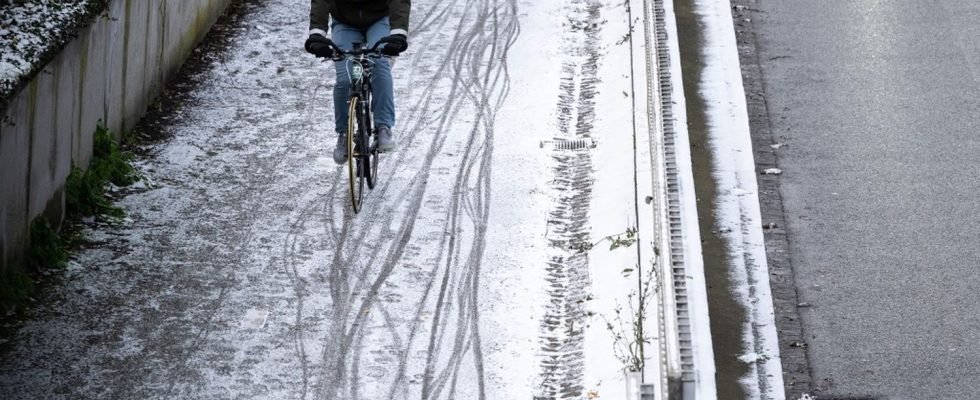This system, triggered at departmental level in the event of a cold spell, is aimed in particular at the most vulnerable groups.
Published
Reading time: 3 min

Temperatures are falling, particularly in the north-east of France. To deal with this, several prefectures activated a “severe cold” plan on Monday January 8.
The sudden drop in temperatures, driven by the weather phenomenon called “Moscow-Paris”, could only last a few days. No department was placed on orange “snow-ice” or “severe cold” alert by Météo-France on Monday morning. This did not prevent public authorities from taking precautions.
1 What does the “very cold” plan consist of?
This plan is aimed at the most vulnerable populations, and more particularly homeless people. A series of social monitoring measures are therefore planned, the main one being the temporary opening of additional emergency accommodation places. To do this, local authorities draw up a list of places likely to welcome people.
“Everything which is in good condition, with the capacity to restart the heating and which is available“can be requisitioned,” the Minister for the City and Housing, Olivier Klein, told AFP during the last launch of the plan in December 2022. In Paris, in particular, “274 additional places” will open, according to the press release from the prefecture.
Other actions implemented? The strengthening of the workforce working at 115 (emergency number for the homeless), the intensification of marauding and the mobilization of law enforcement to identify vulnerable people. Day center hours may also be extended. Finally, communication on the risks linked to cold is reinforced.
2 Why is the device activated?
Within days, temperatures dropped more than 10 degrees nationwide. Météo-France has placed 40 departments on yellow alert.extreme cold” for the days of Monday and Tuesday. It corresponds to the first level of weather vigilance, when temperatures are positive during the day, but drop below -5 to -10°C at night for at least 48 consecutive hours.
The thermometer will notably fall on Tuesday throughout almost all of France: the national thermal indicator, i.e. the average temperature over the entire day in 30 reference cities, could fall below 0°C. A situation that has not happened in France since February 2018. It should nevertheless improve at the end of the week. If this were the case, the episode could not be described as “cold wave”. For this, the intense cold should last at least three days.
3 Where was it triggered?
Before the winter of 2008, the “severe cold” plan was directly initiated by the State on a national scale. In order to better respond to local specificities, it is the prefectures of each department which now make the decision to launch it or not.
Several prefectures have thus activated the “severe cold” plan, notably those of Haut-Rhin, Bas-Rhin, Meurthe-et-Moselle, Côtes-d’Armor, Vosges, Seine-Maritime and Maine- et-Loire. The weather conditions also pushed the prefecture of the Ile-de-France region to activate the system on Sunday.
Each prefecture establishes activation thresholds for the different alert levels, generally three in number, writes France Bleu. Each level corresponds to a series of specific measures. In most departments, level 1 is triggered when temperatures oscillate between -5°C and -10°C, level 2 between -10°C and -18°C, and level 3 when temperatures fall below -18°C.
In Ile-de-France, when level 3 is reached, it is up to the police prefect to take charge of the situation, explains the Paris town hall website.
